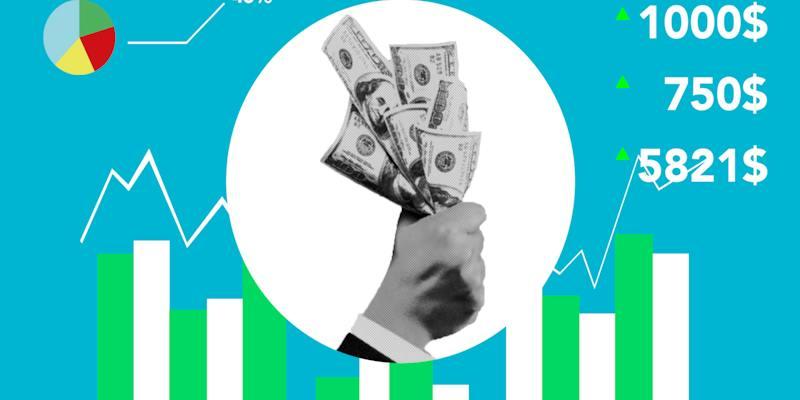Opportunity cost is a key idea in decision-making, reflecting the capacity of one decision when that option is chosen over another. This idea is critical for agencies, traders, and purchasers because it helps evaluate the exchange-offs. Even though it's impossible to forecast opportunity cost prices with complete accuracy, considering them is critical for making knowledgeable selections.
Formula for Opportunity Cost Calculation
The formulation to calculate opportunity cost is straightforward: the difference between the returns of the first-class alternative now not selected and the returns of the selected choice.
Opportunity Cost = Return on Best Forgone Option (FO) - Return on Chosen Option (CO)
To illustrate, consider a business with two exclusive investment options:
Option A: Investing surplus funds in the stock market.
Option B: Reinvest the company in buying new equipment to enhance production.
If the expected to go back on funding (ROI) from the inventory marketplace is 10% in 12 months, and the expected return from updating the gadget is 8% for the identical duration, the possible cost of opting for a new gadget over inventory market investment is 2% (10% - 8%), which means that by way of investing in new equipment, the business enterprise misses out at the danger to earn a higher go back inside the first yr.
As an example, a 2020 take, a look at Harvard enterprise assessment discovered that groups frequently face opportunity cost example fees while deciding to invest in technology upgrades instead of increasing their marketplace presence. A survey showed that 60% of the corporations that selected era upgrades over marketplace expansion reported a lesser growth fee than their competition. This record form underscores the importance of cautiously weighing possible expenses in business choices.
Costs in Corporate Finance Decisions

In corporate finance, understanding the opportunity cost formula alternate-offs between unique investment techniques is essential. Groups face an actual cost once they choose debt or fairness financing. They need to pay interest to bondholders or dividends to shareholders. However, there is a less visible cost: what else could have been carried out with that money?
For instance, a firm that uses its funds to pay debt can't use that same cash for different investments. The question is whether using the borrowed budget for projects like enlargement will convey more income than if the money has been invested elsewhere.
Firms aim to strike the right balance between borrowing and selling shares. They consider both tangible and intangible factors to find a mix that reduces the missed opportunities of using their funds in one way over another. This decision is often complex since they're looking ahead, and future returns are uncertain.
In keeping with a 2020 file through the Economic Control Association, U.S. organizations usually allocate 34% of their capital to debt financing. The relaxation comes from equity, a mixture that has shifted barely over the last decade, reflecting converting marketplace conditions. Inside the EU, a 2021 study confirmed a comparable fashion, with a median debt-to-equity ratio of 1:1.5, highlighting a cautious method closer to debt.
Opportunity Cost Example
Consider a scenario wherein a business enterprise has $20,000 to make investments. It faces a choice: spend money on economic securities with an expected 10% annual return or purchase new equipment to enhance production. The foregone profit makes the most of the opportunity not selected, representing the opportunity cost formula. If the firm opts for securities, it anticipates a go-back of $2,000 in year one, growing to $2 two hundred and $2,420 in the second and third years, respectively.
However, shopping for new machinery may want to enhance production capabilities. But, because of preliminary setup challenges and education requirements, efficiency gains may be sluggish. The enterprise projects further earnings of $500 within the first 12 months, escalating to $2,000 in the second year and accomplishing $five 000 annually after that.
From a monetary point of view, investing in securities appears extra beneficial in the initial two years. However, a better look at the numbers reveals an exceptional story by the 1/3 yr. While we calculate the cumulative earnings ($500 + $2,000 + $5,000) and compare them against the gains from securities ($2,000 + $2,200 + $2,420), the equipment funding ends in a higher basic advantage of $880 in year 3.
Risk vs. Opportunity Costs in Investments

In economics, the period "risk" relates to the uncertainty that the real returns on investment may range from expected, doubtlessly leading to partial or total lack of invested capital. In contrast, "opportunity cost" relates to the capability situation wherein the goback on a chosen funding is much less than what might have been earned on an alternative financing.
The number one difference lies in their awareness regions. The danger is measuring the actual overall funding performance toward its predicted outcome. However, the possibility fee entails comparing the predicted returns of a specific investment with the expected returns of some other alternative now not chosen.
Sunk Costs vs. Opportunity Costs
What have you spent in the past are called sunk costs? If an investor invests $ 10,000 by buying 1,000 shares in Company A at $ 10 per share, this is the same as commanding one-tenth of the shares. As soon as this is out, it cannot be recovered unless shares are sold, or even then, not always in full. But from another perspective, imagine a company buying expensive machinery. Although accounting procedures require the initial investment to spread over time, it is a sunk cost as the company will never recover the money.
However, opportunity costs are loss of earnings that must be foregone when one investment is chosen over another. Therein lies the foregone returns from choosing not to invest in an alternative investment. For example, if an investor decides to put money into the stock of Company A, they've given up the possibility of going into Company B or other financial vehicles.
Each investment must be viewed from the perspective of opportunity cost benefits, not going concern costs. The first is already spent and should not affect further investment decisions. In 2019, a National Bureau of Economic Research study showed that how investors carry costs forward leads investment winners and losers on a very different path and distorts their potential returns.




